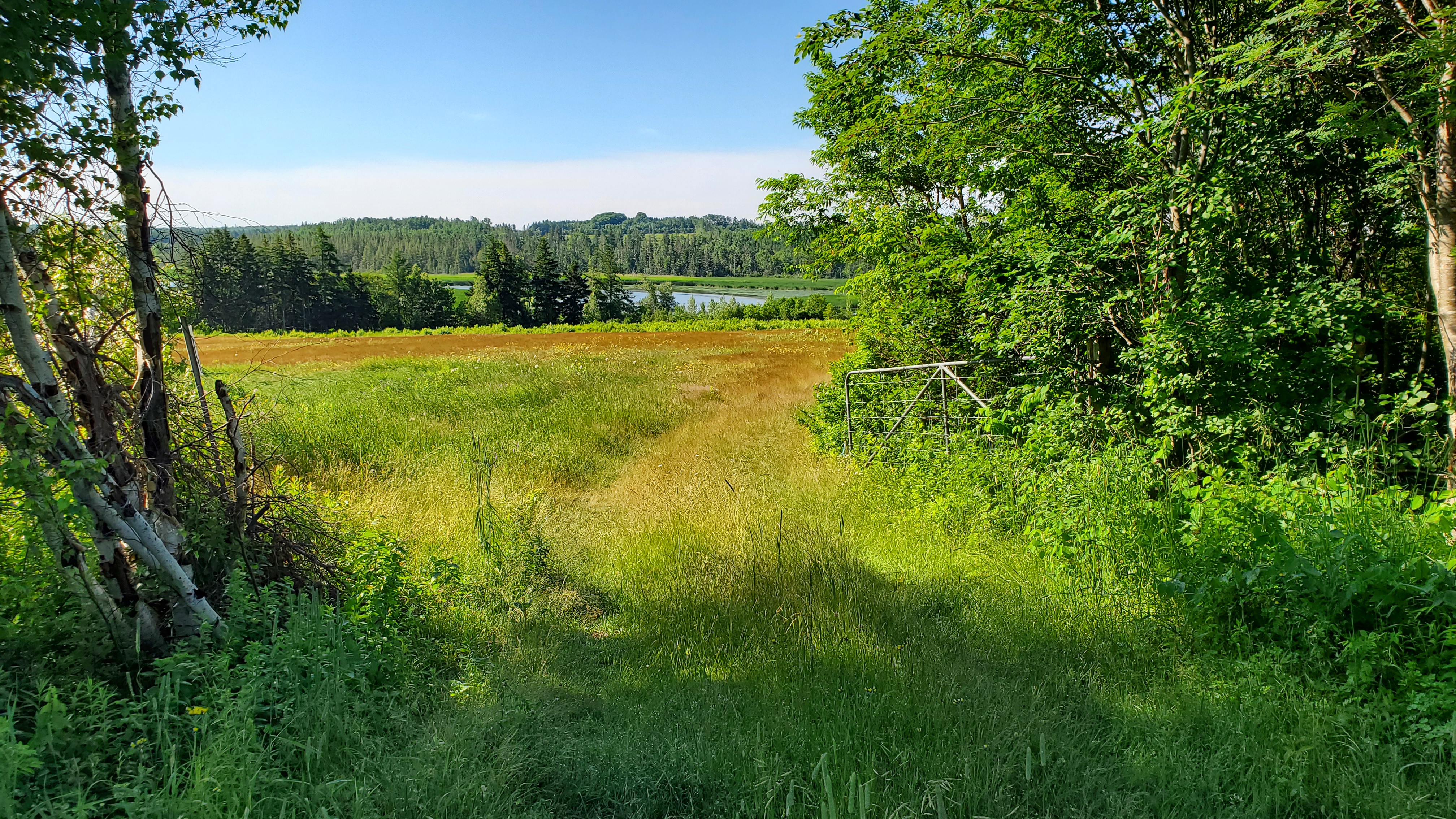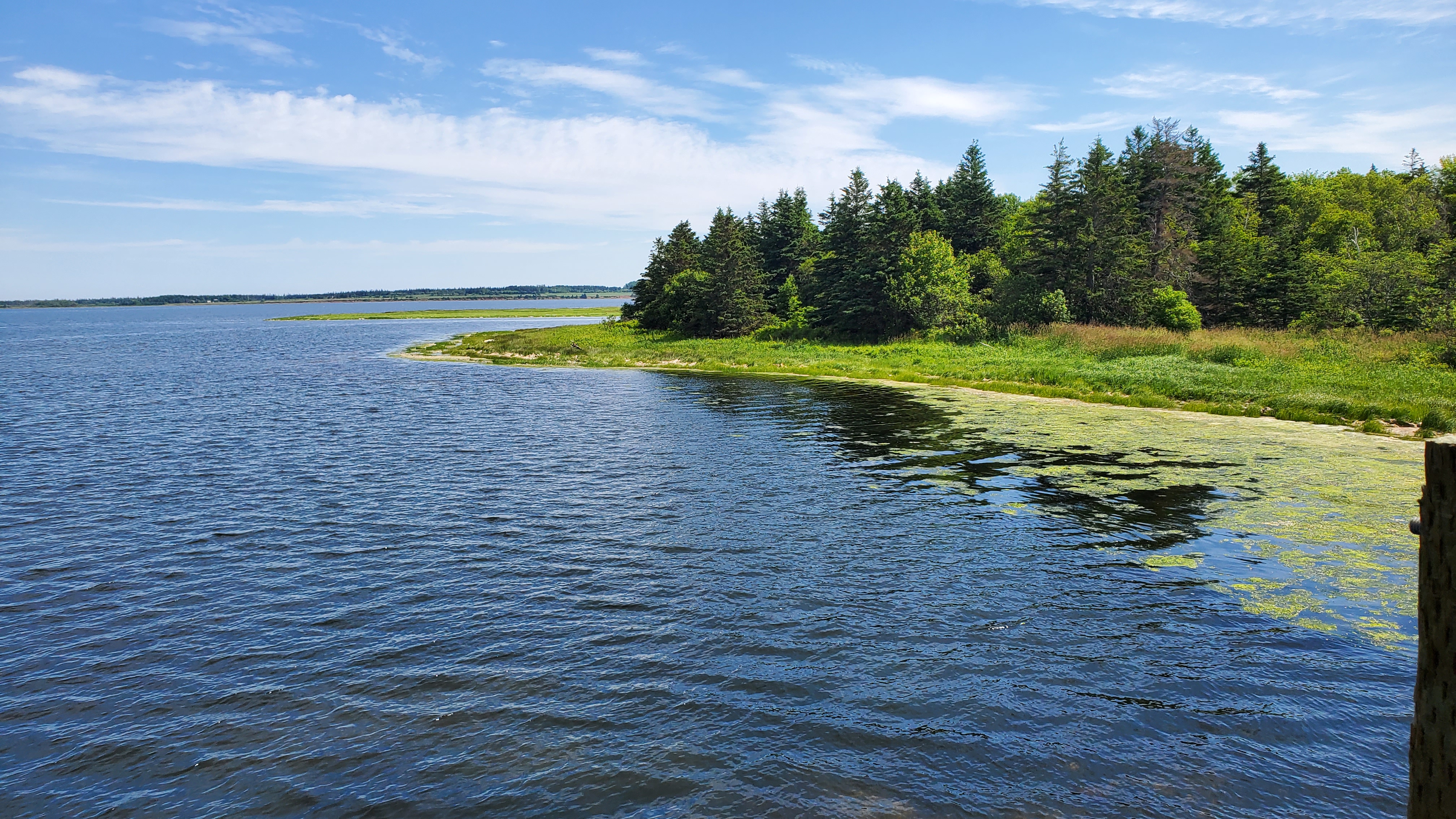Day 8 – St. Andrews to St. Peters – 44 km (27.5 miles)

After yesterday’s rain, the beautiful blue skies that greeted us this morning were a blessing! We enjoyed some of Ben’s baked items for breakfast. It was so good and I took one of his homemade granola bars to go for later in the day.

While yesterday’s ride was beautiful, it was cloudy all day. Today was bright blue skies and sunshine. We traveled along, enjoying the views. We saw blueberry fields for the first time! The blueberries that are grown on the island are the low shrub blueberry. It is more like a thick vine that grows along the ground rather than a bush. When the railroad was in operation on this trail, the train (always accommodating on PEI) would make unscheduled stops to allow folks to disembark and pick blueberries. After their pails were full, they’d catch the next train back to town.






The portion of the Confederation Trail along the southern side of St. Peter’s Bay is the only portion of trail that travels along the shore. The builders of the railroad took a cost saving approach to building. They avoided having the railroad cross any water and the expensive bridges that water crossings required. Most of the trail travels down the center of the island. That’s why we’ve also included coastal roads on our trip, to be able to see the coastline too. But in this one particular stretch, for reasons unknown, the railroad line followed the coast, which necessitated the crossing of 3 rivers. For this reason, this section of trail is one of the most beautiful and is the most highly traveled.












We arrived in St. Peter’s Bay early enough to eat lunch, but were too early to check in so we followed the road to the National Park just to get in a few more miles. This road did not have a shoulder, but it was lightly traveled and the drivers were courteous. We also had a nice view of the other side of the bay as we pedaled along.

After a short visit to the park, we arrived at Points East Coastal Inn. It is situated right on the trail as we came in to town. The house, built in 1870, was built by a prominent merchant and farmer. In 1915, the house was purchased by the Presbyterian church next door and used as a parsonage for many years. This makes the third inn we’ve stayed in during this trip that was once a parsonage! It remained a parsonage until the 1960’s, than sat empty for many years.

There’s an interesting story attached to the inn. Many years ago, an old gentleman lived in the house alone. His next door neighbor came down with typhoid and at that time, homes that had typhoid were burned to the ground to prevent the spread of that dreaded disease. The single gentleman in this big house, seeing his next door neighbor’s plight, gave the neighbor the back part of his house. He figured he had enough house to share. They literally detached the back portion and moved it next door for the neighbor to live in. In the pictures below, you can see the similarities of the houses. The inn is on the left and the neighbor’s house is pictured on the right.


Here’s another view of the neighbor’s house. It is long and narrow and it is obvious that it is part of the house from next door! The front porch was added later.

The innkeeper jokingly told us that when he and his wife bought the inn, they went next door and told their neighbor that they wanted their house back, lol.
What a generous and selfless act! The current owners of the inn have added living quarters to the back where the portion of the house was removed in recent years. But what a remarkable act of kindness! Learning that story makes our stay here even more special!


